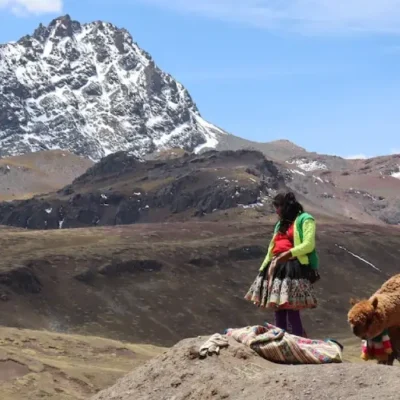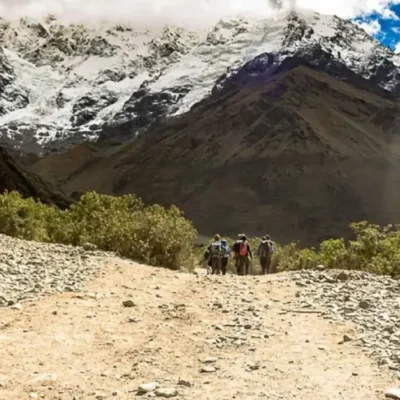
The Salkantay Trek is an extraordinary journey through the Peruvian Andes, taking you through some of the most diverse landscapes in the world—from towering mountain passes to lush cloud forests. While it offers stunning beauty and a profound sense of achievement, it’s essential to prepare for the physical and environmental challenges of high-altitude trekking. To help ensure a safe and enjoyable trek, we’ve compiled the best Salkantay Trek safety tips for 2025.
1. Acclimatize to the Altitude
One of the most important safety considerations for the Salkantay Trek is the high altitude. The trek reaches heights of up to 4,650 meters (15,255 feet) at the Salkantay Pass, which can lead to altitude sickness if you’re not properly acclimatized.
How to Acclimatize:
- Arrive Early in Cusco: Spend at least 2-3 days in Cusco before starting the trek. This allows your body time to adjust to the altitude, reducing the risk of altitude sickness.
- Stay Hydrated: Drink plenty of water to stay hydrated, as dehydration can worsen the symptoms of altitude sickness. Avoid alcohol and caffeine, which can dehydrate you.
- Coca Leaves or Coca Tea: Consuming coca leaves or drinking coca tea is a traditional remedy in Peru that may help alleviate the effects of altitude.
Recognize the Symptoms of Altitude Sickness:
- Headache
- Nausea
- Shortness of breath
- Dizziness
If symptoms persist or worsen, inform your guide immediately. For more tips on preparing for altitude, check out Guiding Cusco Expeditions.
2. Stay Hydrated and Eat Well
Trekking at high altitudes and through rugged terrain requires maintaining good hydration and energy levels. Staying hydrated and eating nutrient-rich meals are essential for keeping your body in top condition throughout the trek.
Hydration Tips:
- Drink Plenty of Water: Aim to drink 2-3 liters of water per day, especially at higher altitudes where dehydration can occur more quickly.
- Use Electrolytes: Add electrolyte tablets or powder to your water to help replenish lost salts and minerals, particularly after strenuous trekking.
- Reusable Water Bottle: Bring a refillable water bottle or hydration bladder. Some trekking companies provide boiled or filtered water along the route.
Eating to Stay Energized:
- High-Energy Snacks: Pack snacks like energy bars, nuts, and dried fruits to keep your energy levels up between meals.
- Eat Regularly: Don’t skip meals, as your body will need extra calories to cope with the physical demands and cold temperatures at altitude.
3. Trekking with a Reputable Guide
Having an experienced and certified guide is crucial for your safety on the Salkantay Trek. A knowledgeable guide not only provides insights into the area’s history and culture but also ensures that you stay on the correct path and are safe at all times.
Why a Guide is Essential:
- Navigation: The Salkantay Trek covers rugged and remote areas where paths can be challenging to navigate, especially for beginners. A guide ensures you don’t get lost.
- First Aid: In case of any health emergencies or injuries, a trained guide can provide first aid and help manage altitude sickness.
- Local Expertise: Guides know the best spots to stop for breaks, camp, or take in panoramic views. They’re also knowledgeable about local weather patterns and potential hazards.
Book your trek with experienced guides through Guiding Cusco Expeditions for a safe and well-organized adventure.
4. Wear the Right Gear
Proper gear is essential for staying safe and comfortable on the Salkantay Trek. The trek involves rapidly changing weather conditions, so it’s important to dress in layers and use the right equipment.
Clothing Essentials:
- Layered Clothing: Dress in layers so you can adjust to different temperatures. Start with a moisture-wicking base layer, add an insulating mid-layer, and finish with a waterproof jacket.
- Trekking Boots: Invest in a sturdy pair of waterproof boots with good ankle support. Make sure they are well-broken-in before the trek to avoid blisters.
- Warm Hat and Gloves: Nights and early mornings can be extremely cold, especially at higher altitudes, so pack warm accessories.
Essential Gear:
- Trekking Poles: Trekking poles are highly recommended for extra stability, especially on steep descents or rocky trails.
- Headlamp: A headlamp is essential for navigating the campsite or trekking in low-light conditions, especially for early morning starts.
- Sunscreen and Sunglasses: High-altitude sun can be intense, so protect your skin and eyes with sunscreen (SPF 30 or higher) and UV-protective sunglasses.
Check out our comprehensive packing list at Guiding Cusco Expeditions to ensure you’re fully prepared for the trek.
5. Know the Weather Conditions
Weather in the Andes can change rapidly, and trekkers need to be prepared for all kinds of conditions, including rain, snow, and strong winds. Understanding the best time to trek and being ready for sudden weather changes can make a big difference in your safety.
Best Time to Trek the Salkantay in 2025:
- Dry Season (May to September): The dry season is the best time for the Salkantay Trek, with clear skies, mild temperatures, and minimal rainfall. However, nights can still be cold, especially at high altitudes.
- Shoulder Seasons (April and October): These months can offer good trekking conditions with fewer crowds, though there may be occasional rain.
Be Prepared for All Weather:
- Rain Gear: Even during the dry season, rain is always a possibility, so pack a lightweight waterproof jacket and rain cover for your backpack.
- Cold Weather Gear: Temperatures can drop significantly at night, especially at higher elevations. Ensure you have a warm sleeping bag rated for cold temperatures.
For real-time weather updates and advice on the best times to trek, follow Guiding Cusco Expeditions.
6. Emergency Preparedness
While the Salkantay Trek is generally safe, emergencies can happen. Being prepared and knowing what to do in case of an emergency can prevent accidents and ensure you get help quickly.
Safety Gear:
- First Aid Kit: Your guide should carry a first aid kit, but it’s a good idea to bring a small personal kit with essentials like bandages, blister treatment, and antiseptic wipes.
- Communication Devices: In remote areas, cellphone coverage can be limited. Guides often carry satellite phones or radios for emergencies.
- Oxygen: Some trekking companies carry portable oxygen tanks in case of severe altitude sickness.
Know the Protocol:
- Inform Your Guide: If you experience any discomfort, altitude sickness, or injuries, always inform your guide immediately. Early intervention can prevent more serious issues.
- Stay with the Group: Never wander off from your group or guide. The terrain can be challenging, and sticking together ensures that everyone stays safe.
7. Respect the Environment and Local Communities
Sustainable trekking is not only about protecting the environment but also respecting the local communities along the route. Following these ethical guidelines will help ensure a positive and respectful experience.
Environmental Responsibility:
- Leave No Trace: Pack out everything you bring in, including trash. Follow the “leave no trace” principles to preserve the natural beauty of the Salkantay Route.
- Use Eco-Friendly Products: Bring biodegradable toiletries to minimize your environmental impact.
Support Local Communities:
- Respect Local Customs: Many communities along the trek still follow traditional customs. Be respectful of their way of life and ask for permission before taking photos.
- Buy Local: Support local businesses by purchasing handcrafted goods or meals from local vendors when available.
By being a responsible traveler, you help sustain the region and ensure future trekkers can enjoy the same beauty. Learn more about eco-friendly trekking with Guiding Cusco Expeditions.
The Salkantay Trek in 2025 is an exhilarating and rewarding journey, but staying safe should be a top priority. By following these Salkantay Trek safety tips for 2025, from acclimatizing properly to using the right gear and trekking with a reputable guide, you can ensure a safe and unforgettable adventure. Proper preparation and awareness of the challenges will allow you to focus on enjoying the breathtaking landscapes, rich culture, and incredible wildlife along the way.
For more information or to book your trek, visit Guiding Cusco Expeditions, or contact us directly via WhatsApp.



















